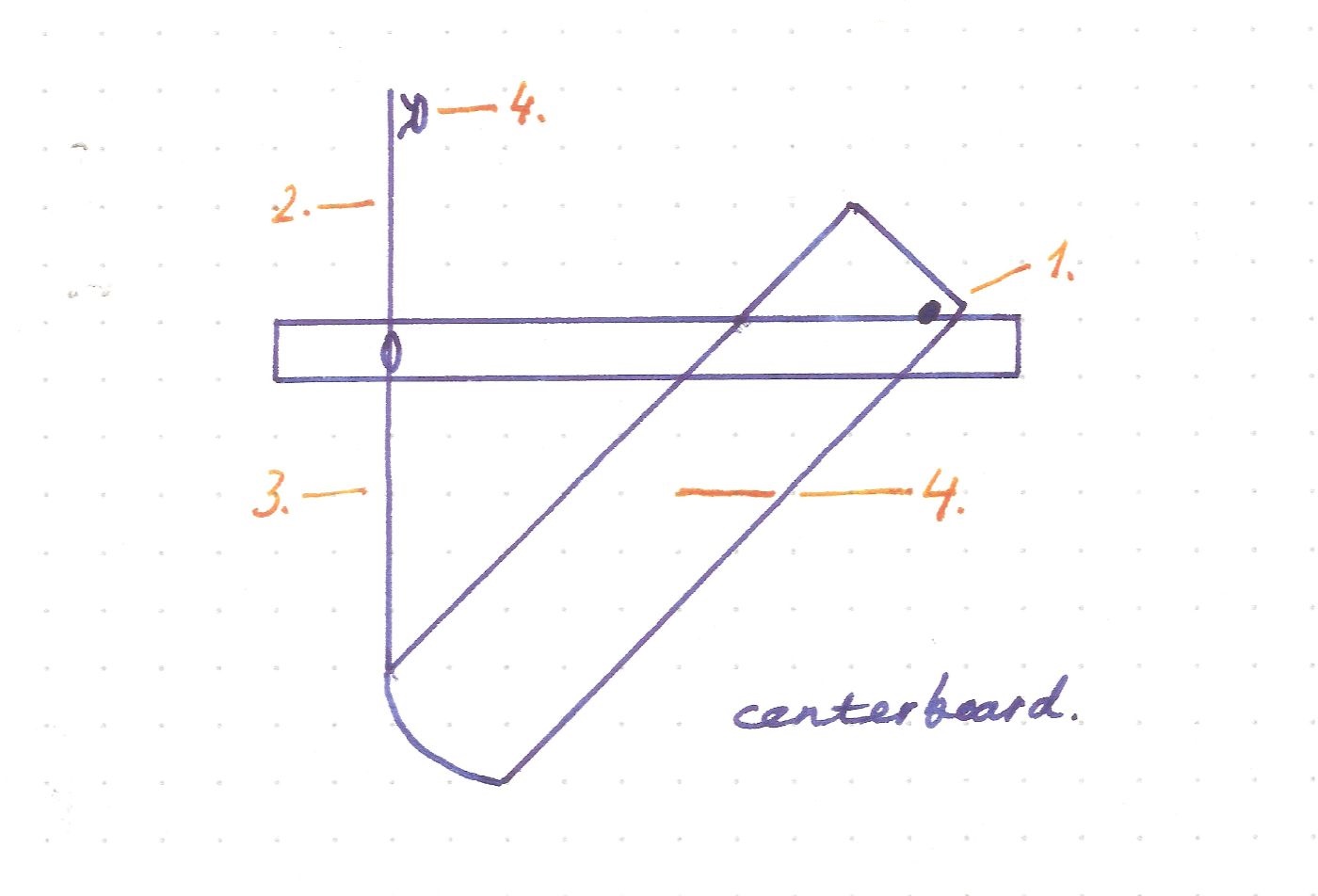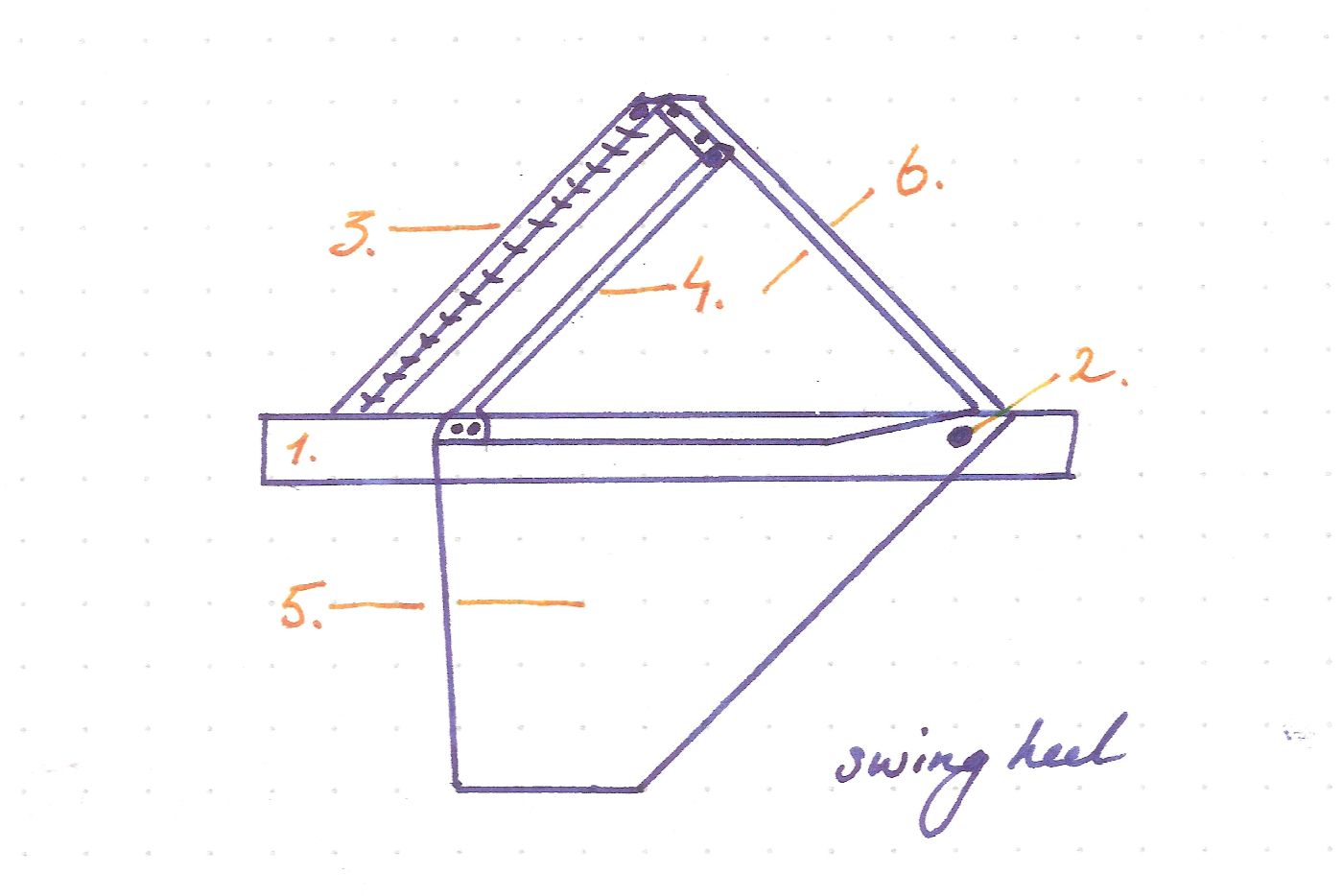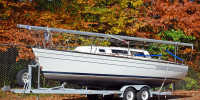What is a Swing or Lifting Keel? 14 Pros and Cons Explained
If you need to know what a swing keel is, like me, this article is for you. I'm trying to decide what keel type is right for me, so I dove into the swing keel.
What is a swing keel? A swing keel, also called a lifting keel, is a type of sailboat fin that can be retracted through a slot in the hull, which reduces draft and allows swing keel sailboats to navigate shallow waters like rivers. The keel rests on a frontal hinge and is generally lowered using a hydraulic ram.
Having a swing keel has some unexpected advantages, and there's one I bet you hadn't thought of. Read on to find out what it is.

On this page:
What is a Swing Keel?
A swing keel is the same as a lifting keel and is also known as a centerboard. These keels swing back along the centerline of the boat, reducing the draft and wetted surface below the waterline. Swing keels allow you to increase and minimize draft on command.
There are some misconceptions regarding the swing keel, which I'm going to set straight in this article.
Some people confuse the swing keel for a canting keel. The canting keel is called the swing keel, but most sailors agree that this name is wrong and that the swing keel refers to the lifting keel or centerboard design.
Centerboard keels are unweighted lifting keels while swing keels generally refer to the weighted lifting keels.
Please note: some websites mention that a centerboard is a vertical keel. This is wrong. A centerboard is a pivoting keel, also called the lifting keel. The vertical retractable keel is called a daggerboard.
So in this article, I'm describing the lifting keel: a swing keel that can swing from front to aft, resting on a frontal hinge. The keel can be either lowered through a cable or a strut.
In contrast, the canting keel swings from side to side, but that's another keel design.
Swing keels can be weighted and can be rather heavy, but you can also carry a simple and fairly lightweight fin (centerboard).
Depending on the size of the sailboat, a swing keel can weigh over 5,000 kg (5 tons). However, smaller sailboats use unweighted fin keels, which mostly reduce slippage to leeward. These are less effective in countering heel.
Swing keels allow you to sail both inland and coastal waters. You can use weighted swing keels as bluewater cruisers as well. However, there are a lot of other considerations when picking a bluewater cruiser.
Properties of swing keels
Swing keels share a lot of properties with fin keels, although it does depend on the exact type of swing keel (with or without ballast).
Weighted swing keels
- can be a choppy ride
- reduce heel quite well
- good prevention of slippage
- fast
Weighted swing keels share almost all properties with bulb keels and will reduce heel considerably and prevent slippage to leeward.
They are less comfortable than full keels, but they are as comfortable as fin keels. They can be quite shaky in heavy chop.
The maneuverability of swing keels is comparable to fin keels, with the added benefit that you can retract the keel to reduce draft, increasing maneuverability considerably.
Swing keels are as fast as fin keels, and when retracted, will be even faster since it reduces the wetted surface.
Centerboards
- choppy ride
- decent prevention of slippage
- don't reduce heel as much
- fast

Centerboards will reduce slippage greatly but won't have a large effect on reducing heel. They are faster than fin keels when retracted. Even when lowered, the wetted surface is pretty small, so it will be faster and more maneuverable.
These keels are great for weekend sailors that go in and out of slips often, sail inland waters like lakes, but also like to sail larger bodies of water (like the Waddenzee).
Understanding all keel designs in 10 minutes
There are too many keel types to get into in this article. For a more detailed explanation of keel design fundamentals, I recommend you go through our Illustrated Guide to Sailboat Keel Types. It also contains a full list of the most common keel designs and their properties. Simply skimming it will help you understand the basics in ten minutes or less.
Run down of all keel designs
Overview of swing keel advantages:
- You can determine the amount of wetted surface yourself
- Won't damage when you run aground head-on (will simply lift)
- Great upwind performance
- Variable draft
- Can be docked in alternative moorings or harbors
- Seaworthy thanks to lifting keel
- Can get closer to shore
- Easy to free when running aground
Overview of swing keel disadvantages:
- Pivot point requires maintenance
- Hinge can get stiff as it gets older
- Older swing keels can be noisy as the hinge develops play
- Lifting cable can break off, rendering all advantages worthless
- This can result in losing your keel by snapping off
- Requires more maintenance than regular keels
How Does a Swing Keel Work Exactly?
Swing keels have a couple of moving parts and are one of the more intricate keel designs out there. But this complexity provides you with a major upside. You get one of the most versatile keel types available.
There are two main designs.
The simpler centerboard keel consists of:
- pivoting hinge
- lifting line
- lifting cable
- cleat
- retractable fin

Heavier swing keels will generally be supported by hydraulics, so that design is a bit more complex.
The weighted swing keel consists of:
- grounding plate
- pivoting hinge
- hydraulic ram
- lifting pennant
- retractable weighted fin
- keel box

The keel has an eye bolt on its top aft, which attaches to a steel cable. The steel cable runs up through the hull and generally attaches to a
The Advantages of Swing Keels
Since you can lower and lift the keel, you can determine the amount of wetted surface yourself. This will allow you to make your boat faster, more agile, or more directionally stable as you see fit.
If the weather turns, and you find yourself in a storm, simply lower it and be on your way.
I've really enjoyed the flexibility of this setup sailing the Frisian lakes and IJsselmeer, where water depth greatly varies, and there are a lot of shallows.
Another great benefit is your keel will lift up when you run aground head-on. This reduces impact damage and may make the difference between having a lifting keel and a dangling keel.
Swing keels provide great upwind performance thanks to a much smaller wetted surface, compared to, for example, full keels.
The variable draft allows you to dock and moor in alternative places other boats can't reach. It also allows you to get really close to shore or even beach her comfortably (with centerboards that retract all the way).
Also, when you do run aground, it is way easier to free yourself since you can simply lift the keel and be on your way.
However, there are also advantages to fixed keels over swing keels. Matej's compared the centerboard and swing keel to fixed keels in-depth and goes over all the pros and cons here.
The Disadvantages of Swing Keels
The main setback with swing keels is that they require a lot more maintenance than fixed keels. There are a lot of moving parts involved, and each of these can be a liability when in bad condition.
It is critical to check each crucial part regularly. Some owners' manuals ask you to check the keel bolts before every sail. I'll go into the maintenance points of swing keels below.
The most important liabilities are your cable, pivot bolts, and eye bolt on the keel. Swing keel cables can simply break off, and with a weighted keel, this can result in you leaving your keel at the bottom of the ocean.
Your hinge can get stiff or develop some play, which may result in noise and rattling.
Important Things to Know Before Buying a Swing Keel Sailboat
With swing keels, you'll need to perform regular maintenance with the lifting mechanism.
This includes the lifting cable, pennant, and hydraulic levels of the hinge.
You need to check the tension of the keel hinge bolts before each sail to be sure.
You also need to maintain the lifting winch (if you have one). The Cornish Crabber I've sailed just used a simple line on a cleat in the kitchen.
Things you'll need to maintain:
- fastening the keel hinge bolts
- the lifting cable
- the lifting winch
- the eye bolt
- the pennant
- hydraulic levels of the hinge
- the turning ball
Here's a very good article on swing keel maintenance at stingysailor.com (new tab).
Popular Sailboats with Lifting Keels
- Cornish Crabber
- Catalina 22
- Catalina 25
- Southerly 49
- Southerly 95
- Benneteau Oceanis 331
- Jeanneau Sun Odyssey 292
- Jeanneau Sun Odyssey 32
If you want more information on these models, you can read a more detailed discussion on popular sailboat models with lifting keels here.
If you're interested in sailboats with lifting keels that are also trailerable, please check out our list of the most popular trailerable lifting keel sailboats.
Other Keel Designs to Consider
There are dozens of keel types out there and all serve a different purpose and excel under different conditions. To understand which keel type is best for your situation, I recommend you read our Illustrated Guide to Sailboat Keel Types, which contains the fundamentals of keel design and an overview for each keel type's characteristics (including diagrams). It will help you understand which keel designs to consider in ten minutes or less.
Did you find the answer to your specific question?
👍 23 👎 6



Comments
sandra olson
i am going to pick up my first boat, it is a 22 ft, catalina, with a swing keel It is in someone’s back yard, he is not able to use it anymore, so he is giving it to me, I will have to learn all about this boat, on my own, so i am a little nervous, but looking forward to this adventure, It is a concrete bottom boat, as far as i know, I will know more after tomorrow, Your site has been helpful, I understand she comes with some sails, i may need one or two extra and has no motor, but is sitting on its own trailor, More tomorrow
Robert Trimmer
I am more of a powerboat person but I have been given a Snapdragon 23 yacht and it has a lifting keel, thank you for the insight on how they work as I will be taking it out before the end of the summer hopefully, I am a novice but will be undertaking training with experienced friends, also I will be obtaining an outboard motor as her engine currently does not work so I can use her on rivers, Your site has been very helpful, thank you.
Mark Lewis
Can you address one issue I am really interested in?
Does a lifting keel need to be all up or all down, or can you choose the level of depth depending on sailing conditions.
I live and sail in the Cayman Islands, an area where we have plenty of shallow water, but variable depth across a lagoon. It would be very useful to be able sail a boat with the lifting keel say half way down, rather than fully extended. Is this possible.
Also, can you sail downwind under spinnaker with the keel drawn up to reduced wetted area and increase speed?
Leave a comment